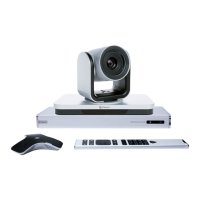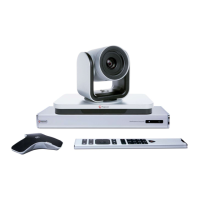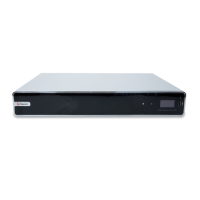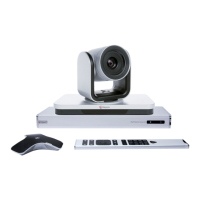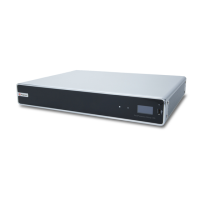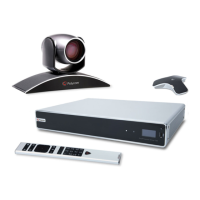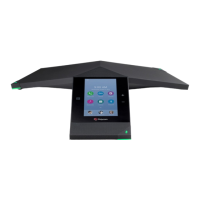Setting Description
Enable EAP/802.1X
(under EAP 802.1X in the local interface)
Enables EAP/802.1X network access. The system
supports the following authentication protocols:
▪ EAP-MD5
▪ EAP-PEAPv0 (MSCHAPv2)
▪ EAP-TTLS
▪ EAP-TLS
EAP/802.1X Identity
(under EAP 802.1X in the local interface)
Specifies the identity the system uses for 802.1X
authentication. This setting is available only when
you enable EAP/802.1X. You can’t leave this field
blank.
EAP/802.1X Password
(under EAP 802.1X in the local interface)
Specifies the password the system uses for 802.1X
authentication. This setting is required when you
use EAP-MD5, EAP-PEAPv0, or EAP-TTLS.
Enable 802.1p/Q
(under 802.1p/Q in the local interface)
Enable if you want to configure your system with a
virtual LAN (VLAN) and set link layer priorities.
VLAN ID Identifies the VLAN you want your system to
operate on. This setting is available only when you
enable 802.1p/Q. You can use any value from 1 to
4094.
Video Priority Sets the link layer priority of video traffic on the
wired LAN. Video traffic is RTP traffic consisting of
video data and associated RTCP traffic.This setting
is available only when you enable 802.1p/Q. You
can use any value from 0 to 7, although Polycom
recommends not using 6 and 7.
Audio Priority Sets the link layer priority of audio traffic on the
wired LAN. Audio traffic is RTP traffic consisting of
audio data and associated RTCP traffic. This
setting is available only when you enable 802.1p/Q.
You can use any value from 0 to 7, although
Polycom recommends not using 6 and 7.
Control Priority Sets the link layer priority of control traffic on the
wired LAN. Control traffic consists of control
information associated with a call:
▪ H.323: H.225.0 Call Signaling, H.225.0 RAS, H.
245, Far-End Camera Control (FECC)
▪ SIP: SIP Signaling, FECC, Binary Floor Control
Protocol (BFCP)
This setting is available only when you enable
802.1p/Q. You can use any value from 0 to 7,
although Polycom recommends not using 6 and 7.
Configuring Network Settings
Polycom, Inc. 30
